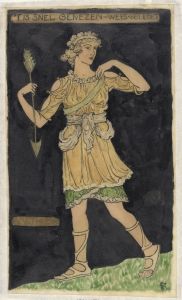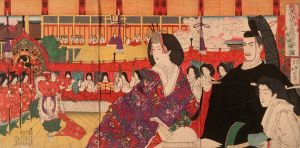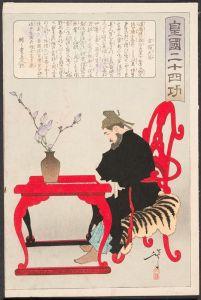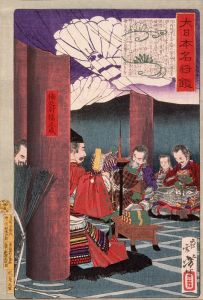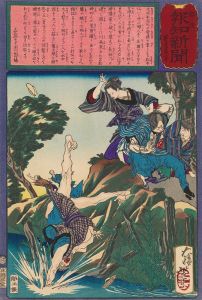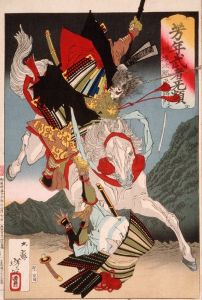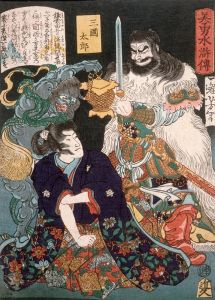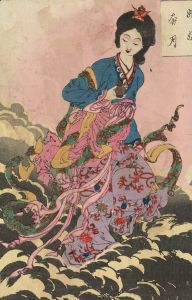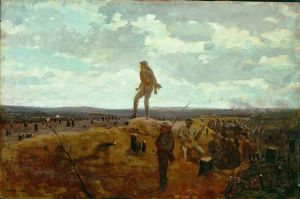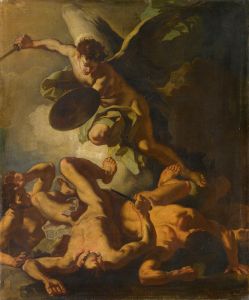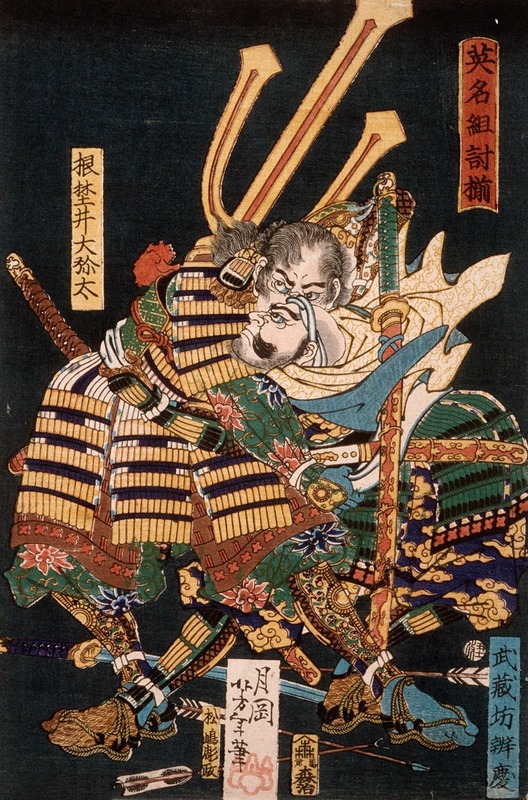
Musashibō Benkei Fighting Nenoi Ōyata
A hand-painted replica of Tsukioka Yoshitoshi’s masterpiece Musashibō Benkei Fighting Nenoi Ōyata, meticulously crafted by professional artists to capture the true essence of the original. Each piece is created with museum-quality canvas and rare mineral pigments, carefully painted by experienced artists with delicate brushstrokes and rich, layered colors to perfectly recreate the texture of the original artwork. Unlike machine-printed reproductions, this hand-painted version brings the painting to life, infused with the artist’s emotions and skill in every stroke. Whether for personal collection or home decoration, it instantly elevates the artistic atmosphere of any space.
Tsukioka Yoshitoshi (1839–1892) was a renowned Japanese ukiyo-e artist, known for his innovative and dynamic woodblock prints. One of his notable works is "Musashibō Benkei Fighting Nenoi Ōyata," which captures a dramatic scene from Japanese history and folklore. Yoshitoshi's work is celebrated for its vivid storytelling, intricate details, and the ability to convey intense emotion, which is evident in this particular print.
Musashibō Benkei is a legendary figure in Japanese history, often depicted as a warrior monk who served Minamoto no Yoshitsune, a prominent military commander during the late Heian and early Kamakura periods. Benkei is famed for his loyalty, strength, and martial prowess. According to legend, he was originally a rogue monk who challenged and defeated 999 warriors, collecting their swords as trophies. His 1000th duel was with Yoshitsune, who bested him, leading Benkei to become Yoshitsune's devoted retainer.
The scene depicted in Yoshitoshi's print involves Benkei in combat with Nenoi Ōyata, another warrior. While specific historical records of this encounter are sparse, the story is part of the rich tapestry of tales surrounding Benkei's exploits. Yoshitoshi's portrayal of this battle is emblematic of his style, which often focused on historical and mythical subjects, bringing them to life with a sense of drama and movement.
Yoshitoshi's work came at a time when Japan was undergoing significant changes, transitioning from the Edo period to the Meiji era. This period was marked by the opening of Japan to the West and the subsequent modernization of the country. Despite these changes, or perhaps because of them, there was a renewed interest in traditional Japanese art forms, including ukiyo-e. Yoshitoshi was one of the last great masters of this art form, and his works are seen as a bridge between traditional Japanese woodblock printing and modern artistic expressions.
In "Musashibō Benkei Fighting Nenoi Ōyata," Yoshitoshi employs bold lines and a dynamic composition to convey the intensity of the battle. The figures are depicted with exaggerated expressions and poses, a common technique in ukiyo-e to emphasize the emotional and physical stakes of the scene. The use of color and shading adds depth and vibrancy, drawing the viewer into the moment of conflict.
Yoshitoshi's prints often explored themes of heroism, loyalty, and the supernatural, reflecting both the cultural values of his time and the timeless appeal of such stories. His ability to capture the essence of these themes in a single image is part of what makes his work enduringly popular.
"Musashibō Benkei Fighting Nenoi Ōyata" is a testament to Yoshitoshi's skill as an artist and his deep engagement with Japanese history and folklore. It stands as a significant piece within his oeuvre, illustrating not only a legendary tale but also the broader cultural and historical context of 19th-century Japan. Through this work, Yoshitoshi continues to captivate audiences, offering a window into the past and the enduring power of myth and legend.





